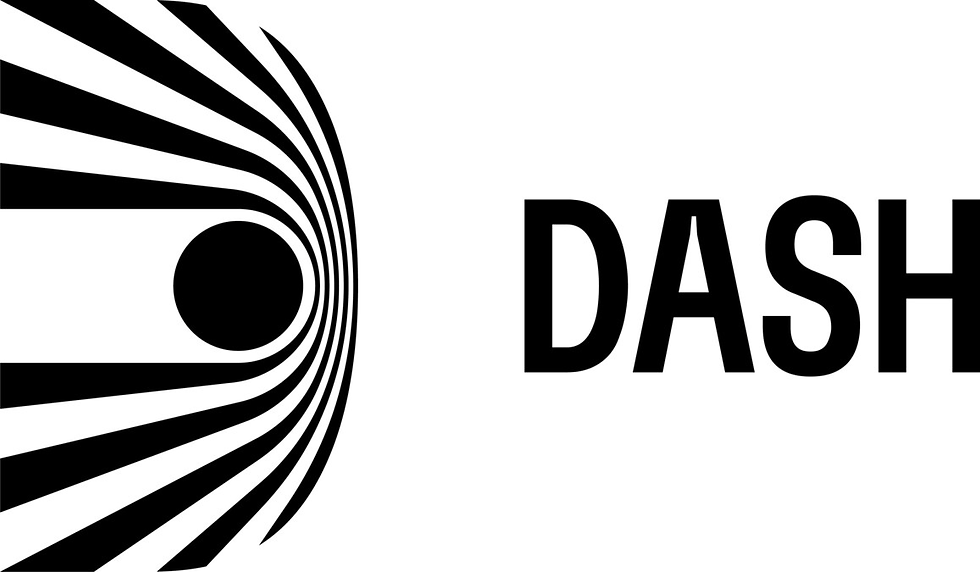Figure’s Plan with $39B Valuation: Expand BotQ Factory, Boost Manufacturing and Data Infrastructure
- Ethan Carter

- Sep 17
- 11 min read

Quick news summary and why it matters
Figure closed a Series C raising over $1 billion at a $39 billion post‑money valuation, and the company says it will channel much of that capital into scaling its BotQ Factory and strengthening the manufacturing data systems that feed its robots. The headline number matters beyond startup theater: funding at this scale enables capital‑intensive factory builds, accelerates the cadence of robot production and enterprise rollouts, and signals strong investor conviction in hardware‑plus‑software Industry 4.0 business models. TechCrunch’s coverage of the round and a PR Newswire release confirm the company’s public roadmap: expand manufacturing, grow the installed fleet, and invest heavily in the data pipelines that make robots smarter over time.
BotQ Factory expansion — feature breakdown and direct product impact

What Figure is building and why factory scale matters
Figure’s public announcement says the Series C proceeds will be used to scale the BotQ Factory to increase assembly throughput and shorten lead times. In practical terms, that means expanding physical line space, adding automated sub‑assembly stations, and investing in supply‑chain redundancy so the company can produce more BotQ robotic platforms and associated hardware such as end‑effectors, sensors, and enclosures. The company also flagged hiring and R&D as priorities tied to the factory expansion, which indicates a combined push on both manufacturing muscle and product evolution.
Factory scale directly affects product availability and customer experience. Higher throughput enables more Robot‑as‑a‑Service (RaaS) deployments, standardized builds that reduce per‑unit variance, and shorter procurement cycles for enterprise buyers. For manufacturers running pilot programs, an increase in factory output means a faster path from a few trial robots to full line integration.
Insight: expanding factory capacity is not just about quantity; it’s about enabling iterative hardware changes and delivering consistent, serviceable units to customers.
Tighter product and cloud integration as a delivery feature
Part of the value proposition is the integration between factory‑built hardware and Figure’s cloud and AI stack. The PR release and TechCrunch coverage emphasize that factory builds will come pre‑integrated with firmware and cloud provisioning, which reduces on‑site setup time and ensures units roll out with consistent software versions and telemetry hooks in place. That makes fleet updates—and rollbacks—more predictable across customers.
From a service standpoint, more factory‑consistent units mean Figure can offer clearer RaaS tiers and improved Service Level Agreements (SLAs). Shorter lead times and standardized hardware also simplify maintenance schedules and spare‑parts planning for enterprises.
How the expansion accelerates hardware/software co‑design
A larger factory footprint enables a faster feedback loop between deployed units and product teams. When you can produce and field tens or hundreds more units quickly, you get more real‑world telemetry back to engineering. That shortens the design‑build‑test cycle for both hardware revisions and model retraining, enabling more frequent, lower‑risk updates to perception stacks, motion planners, and safety controls.
This co‑design dynamic is a foundational Industry 4.0 principle: coupling manufacturing scale with centralized data and iterative software updates amplifies product improvement velocity. As Figure scales BotQ production, expect the company to push regular OTA firmware and model updates that reflect fleet learnings, reducing field failure rates and improving task accuracy over time.
Manufacturing specs and performance details — what to expect from scaled BotQ production

Capacity, throughput and delivery implications
Figure has said that factory scale is a primary use of proceeds from the Series C, which should materially increase units‑per‑quarter from the BotQ Factory and reduce lead times for orders. TechCrunch’s reporting on the round and the company release make plain that the near‑term priority is converting pilots into production installs, a shift that requires manufacturing throughput, supply‑chain resilience, and predictable QA processes.
Operationally, expect to see these measurable changes within 12–24 months: shorter quoted lead times for initial delivery, a higher rate of pilot conversions to production, and larger bulk shipments for multi‑line or multi‑site customers. For procurement teams, that means automation timelines that used to stretch several quarters may compress into single‑quarter procurement windows as factory capacity ramps.
Reliability, standardization and uptime expectations
Scaling production tends to enable tighter quality assurance (QA) and better standardized builds. As more BotQ robots are assembled under a consistent factory process, per‑unit variability falls—and that typically translates into improved reliability metrics such as Mean Time Between Failures (MTBF) and higher uptime for deployed fleets. Enterprises will want to track MTBF improvements and warranty claim rates as early indicators of manufacturing maturity.
Standardized builds also make field servicing more efficient: common spare inventories, predictable firmware baselines, and repeatable installation scripts reduce time‑to‑repair and enable remote diagnostics to be more effective.
Software, telemetry and fleet learning at scale
A larger installed base equals more telemetry. Each BotQ unit sends sensor logs, perception outputs, and health metrics back to Figure’s training pipelines—data that is valuable for retraining models and tuning system parameters. As factory output increases, Figure’s models should see faster iteration cycles and a wider set of edge cases represented in training data, improving fleet‑wide perception and task success rates.
Short‑term operational metrics to watch include delivery lead times, frequency of OTA updates, MTBF trends, and qualitative reports from pilot customers on setup and commissioning complexity. Improvements across these signals will be the clearest evidence that factory expansion is translating into field performance gains.
Key takeaway: factory scale both raises the ceiling for deployment volume and lowers friction for enterprise adoption—provided Figure maintains supply chain discipline and disciplined QA as output rises.
Data infrastructure details — specs, scaling needs, and performance metrics

What data scale looks like for a growing fleet
Scaling BotQ production drives specific data requirements: higher telemetry ingestion rates from on‑device sensors, larger volumes of labeled training data from real environments, and greater demand for near‑real‑time inference on the edge with reliable sync to cloud models. The result is a mixed workload: bursty, high‑bandwidth uploads for episodic logs; steady small‑message telemetry for health and status; and periodic large‑batch labeling and model training jobs.
Measure infrastructure needs in concrete terms: peak ingestion gigabytes per minute, daily labeled frames or episodes, model training wall‑clock time, and end‑to‑end versioning latency from data capture to model deployment.
Infrastructure performance metrics that matter
Enterprises and vendors should watch four practical metrics:
Data ingestion throughput and backpressure under peak loads.
Model training turnaround (hours/days) for prioritized retraining cycles.
Versioning latency: time from data capture to model version deployed across the fleet.
Governance and privacy controls: audit trails for PII, retention policies, and data valuation artifacts for commercial negotiations.
Investing in metadata management, data valuation, and repeatable pipelines is how companies convert raw telemetry into reliable model improvements. As research on data valuation argues, treating data as a managed capability allows teams to prioritize high‑value labeling work and trace model performance back to training inputs—critical for enterprise auditing and for justifying RaaS economics.
Insight: robust metadata and pipeline practices are the difference between a growing fleet that learns and a growing fleet that merely collects more logs.
Rollout timeline, funding use, and pricing signals for customers
Funding allocation and near‑term milestones to watch
Figure’s Series C statement and PR release list the BotQ Factory expansion, hiring, R&D, and data infrastructure as explicit funding uses. That allocation implies near‑term milestones such as factory capacity targets, public announcements of new production lines, and expanded field engineering teams. Watch for capacity numbers (units per month or quarter) and any factory opening timelines that Figure publishes; those will be the clearest commitments to production ramp.
Expected rollout timeline for enterprise deliveries
Given the typical cadence of capital deployment and factory commissioning, expect an immediate scale‑up effort followed by phased capacity increases: pilot conversions and smaller fleets in the next 6–12 months, and more substantive multi‑site rollouts over 12–24 months as supply chains and QA stabilize. This cadence aligns with the company’s messaging that the factory is a primary near‑term use of proceeds.
For procurement and operations teams, planning horizons should be adjusted: if you’ve been waiting on broader availability, the next 12–24 months may be a practical window to move from proof‑of‑concept to production.
Pricing, eligibility and what procurement teams should ask now
Public pricing details remain limited, but larger factory throughput usually enables tighter, more standardized pricing models—think multi‑tier RaaS plans with defined SLAs, subscription options for maintenance and updates, and clearer bundling of software and analytics services. Greater throughput also means Figure can serve a broader set of customers beyond a small number of pilot partners.
Manufacturers should begin asking Figure for:
Projected lead times and guaranteed delivery windows.
Warranty and spare‑parts policies, including MTBF targets and service response SLAs.
Data governance, integration APIs, and exportability of telemetry and annotations.
Pricing tiers and how volume discounts or enterprise bundles are structured.
These questions will determine whether a vendor‑led automation program aligns with internal procurement, IT, and data policies.
Key takeaway: the funding round accelerates a transition from bespoke, pilot‑level projects to standardized, SLA‑driven offerings that should be easier to budget and manage.
Comparison: Figure versus competitors and previous fundraising examples

How Figure’s raise compares to data‑infrastructure financings
Figure’s >$1B Series C at a $39B post‑money valuation is large in robotics terms and stands alongside recent big rounds in the manufacturing data domain. For context, Scale AI’s $1B raise doubled its valuation to $13.8B, signaling investor appetite for companies that solve the data problems underpinning AI. The contrast is instructive: Figure couples robotics hardware with software and a factory ecosystem, while Scale AI is primarily a data tooling and labeling play that serves many AI verticals.
This difference matters for capital allocation. Robotics requires heavy up‑front CAPEX (factories, tooling, inventory), whereas data platforms invest more in engineering, labeling pipelines, and cloud compute. Valuations for both signal confidence that manufacturing can become increasingly data‑driven—and that both hardware and data services are essential to the Industry 4.0 stack.
Strategic differences and buyer implications
Figure’s integrated model—hardware, factory, software, and managed services—offers enterprises turnkey automation with lower integration overhead but higher vendor lock‑in. In contrast, data‑platform providers like Scale AI enable customers to improve models across different hardware ecosystems but require manufacturers to handle hardware procurement, integration, and deployment logistics.
For manufacturers, the choice is pragmatic: a turnkey robotics vendor simplifies onboarding but concentrates operational and data governance decisions with the vendor; a modular approach with dedicated data vendors offers flexibility but demands more internal resources and integration work.
Market signal and what to expect competitively
Large rounds for both robotics and data infrastructures tell buyers they can expect faster product maturity, more enterprise‑grade SLAs, and clearer pathways to scale. Competition will likely push vendors to standardize APIs, clarify data ownership terms, and offer stronger integration tooling. For system integrators and ISVs, this funding environment should catalyze demand for connectors, MES/ERP integrations, and analytics layers that sit on top of fleets.
Insight: vendor selection is becoming a trade‑off between integration simplicity and long‑term control over data and customization—both are valuable but require different organizational capabilities.
Real‑world usage and developer impact — deployment, integrations and ecosystem
Immediate operational benefits for manufacturers
An expanded BotQ Factory means more robots delivered, which directly reduces the friction of moving from pilot to production. Manufacturers get faster automation deployments, more predictable cycle times for repetitive tasks, and improved consistency on lines where BotQ is applied. For operations managers, the practical effects are meaningful: less downtime during scaling, more predictable throughput, and fewer bespoke mechanical variations to manage across sites.
What developers and integrators should expect
Standardized hardware simplifies the developer experience. With fewer hardware variants, SDKs become more stable, and testing matrices shrink. That reduces integration time for vision modules, motion planners, and MES/ERP connectors. System integrators will find it easier to build repeatable solutions—deployments that once required bespoke drivers or calibration scripts become templates that can be reused across customers.
As hardware becomes more uniform, third‑party ISVs can focus on higher‑order value: analytic dashboards, workflow orchestration, and custom vision models for specific parts and defects.
Data‑sharing, governance and commercial practice in action
A growing fleet forces concrete decisions about data ownership, privacy, and monetization. Manufacturers need to negotiate who owns raw telemetry, who controls derived annotations and trained models, and how usage contributes to commercial value. Research on data‑driven business models underscores that firms converting operational data into commercial advantage must invest in valuation frameworks and clear contractual terms.
For partners, this is an opportunity: system integrators can offer managed data services, compliance audits, and custom pipelines that help manufacturers extract value while maintaining control. Figure’s investment in data infrastructure suggests it will offer richer APIs and more robust governance features—both of which become selling points for enterprise customers.
Key takeaway: as BotQ units proliferate, the ecosystem around them—integrators, ISVs, data partners—will see demand for stable tools and governance solutions that reduce the operational burden on manufacturers.
FAQ — Figure BotQ Factory, funding, and manufacturing data infrastructure

Q1: How much did Figure raise and what is the valuation? A: Figure closed a Series C raising over $1 billion at a $39 billion post‑money valuation, according to the company announcement and corroborated by press coverage.
Q2: What will the funding be used for specifically? A: The company has publicly stated priorities that include expanding the BotQ Factory, scaling manufacturing and data infrastructure, hiring for engineering and field teams, and accelerating deployments to enterprise customers. See Figure’s Series C announcement for the company’s headline uses of proceeds.
Q3: When will expanded BotQ Factory capacity impact delivery timelines? A: Figure describes an immediate scale‑up following the close of the round; expect phased increases in deliveries with significant pilot‑to‑production movement over the next 12–24 months, as reported in coverage of the raise. See TechCrunch’s write‑up for timeline context.
Q4: How does this affect current customers and pilots? A: Early benefits should include shorter lead times, standardized hardware builds, and potentially faster software updates as the installed base grows. Current customers should confirm updated SLAs, warranty terms, and integration timelines with Figure. The PR Newswire release reiterates these priorities.
Q5: Will Figure’s expansion change data governance or ownership terms? A: Scaling data infrastructure raises governance questions; enterprises should expect more structured data workflows, better auditing capabilities, and the need to negotiate ownership and valuation of telemetry and derived models. Scholarship on data valuation highlights the importance of formalized practices when data becomes a commercial asset.
Q6: How does Figure compare to data‑platform companies like Scale AI? A: Figure is hardware‑centric—robotics plus a factory and managed services—whereas Scale AI focuses on annotation, labeling, and tooling for model development across many verticals. Both models are complementary: one supplies robots and fleet management, the other supplies data tooling that can improve model performance. The Scale AI fundraising podcast provides context on data‑infra valuations while Figure’s Series C materials outline the hardware play.
Q7: What should procurement and IT teams ask Figure before signing a deal? A: Ask for projected lead times, detailed warranty and maintenance terms, data export and API options, and explicit SLAs for uptime and update cadence. Confirm how Figure handles model versioning and what audit trails are available for compliance.
What Figure’s $39B valuation means for manufacturers and Industry 4.0 in the coming years
Figure’s $39 billion post‑money valuation is more than a headline; it is a market signal that capital markets are willing to underwrite the expensive, risky work of turning robotics into repeatable, enterprise‑grade products. By earmarking significant capital for the BotQ Factory and manufacturing data systems, Figure is betting that the path to profitable scale in robotics runs through controlled production, rigorous QA, and the ability to convert fleet telemetry into meaningful model improvements.
In practical terms, manufacturers should see this as a trigger to revisit automation roadmaps. Where procurement cycles were once measured in long pilot phases and bespoke integrations, the maturation of factory‑scale robotics promises standardized deployments, clearer SLAs, and subscription pricing that is easier to budget over multi‑year horizons. IT and data teams should use this moment to harden data governance practices: negotiate ownership boundaries, insist on exportable telemetry, and demand transparency around model training loops so that operational intel remains an asset, not a blind spot.
Systems integrators and ISVs face opportunity and responsibility. As more BotQ units come online, integration work will shift from low‑level device drivers toward higher‑value orchestration, analytics, and compliance services. Those who build robust connectors to MES/ERP systems, create reusable deployment templates, and can operationalize data valuation will be best positioned to capture growth.
That said, uncertainties remain. Scaling factories is hard: supply‑chain shocks, quality control at volume, and the complexities of real‑world deployment can slow expected gains. Data governance disputes and regulatory scrutiny around industrial data could complicate commercial models. Companies that move fastest will be those that pair ambition with discipline—investing in metadata, audit trails, and repeatable pipelines as much as they invest in assembly lines.
In the coming years, expect a tighter feedback loop between factory and field, more predictability in robot availability, and an ecosystem increasingly oriented toward data‑driven manufacturing outcomes. For organizations planning automation investments, the choice now is about timing and governance: prepare to act as delivery windows compress, but insist on contractual clarity that protects operational control and the commercial value of your data.


